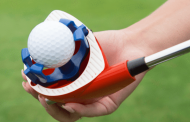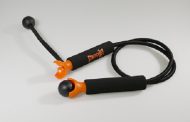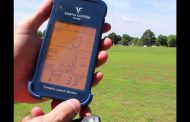When you first turn up at a driving range, it’s easy to feel a little intimidated, as there are sure to be seasoned players making use of the facility. The first thing to remember, is that however good the other players are in the driving range, they stepped in to it for the first time too, so if you are a beginner, do not worry. There is nothing to be concerned about here, they will all be focusing on their own game and won’t worry too much about what you are doing.
If you are feeling nervous about going to the driving range for the first time, then why not ask the staff when the quietest times of the week are and see if you can go then?
The temptation with many beginner golfers, is to pull out the driver as soon as they step on to the driving range and attempt to hit the ball as far as they can. It makes sense right? It’s called the ‘driving’ range after all. Well, not really. The purpose of the driving range is to really get to know your clubs and the different distances you can achieve with them. Furthermore, you want to loosen up a little bit before you start swinging at maximum speed with a driver, this will help you to avoid injury.
Initially, you want to set up your aim and make sure it is accurate. Place a club at your feet and parallel to the line you want to hit the ball (your target line) and another one perpendicular to the target line, in the centre of your stance. Then, as you address the ball, you can use the perpendicular club to help align your feet and stance. You may see other people at your driving range using this same set-up and that’s because it really does work.
Something you may notice about the majority of driving ranges, in comparison to being out on the course, is that the surface you are standing on is rubber and not grass. There will usually be a rubber tee already in position on the mat, which means you only have one option when teeing your ball up at the driving range. In some instances, these can be adjustable, simply by turning them but a better option is to purchase a selection of your own rubber tees or a tee holder. Both of these will allow you to practice striking the ball with different clubs more accurately.
If you look out of the driving range, you will see a number of distance markers, this will give you an idea of how far you are hitting the ball. So, going back to our previous point of using the driving range to get to know you clubs and the distances you can hit the ball with them, it’s advisable to start with a wedge, not a driver. The reason it is better to start with a wedge, is because it will help to warm up your body and muscles and it’s also easier to hit the ball nicely with a wedge than a driver. You want to start your practice session positively and the best club to do that with, is a wedge.
Once you have got a nice swing and rhythm going, you can work your way along your iron clubs, each time aiming for a different target and analysing the distances you are hitting the ball. You can then progress to the fairway woods and driver but do not swing 100% at the ball. Instead, use this time to take a more measured approach and concentrate on your swing technique with your driver, as opposed to going full throttle.
On the face of it, simply working through your bag of golf clubs, hitting 100 balls in the same direction can seem a little, well, boring. If that’s how you are feeling about it, why not actually play a round of golf whilst on the range? All you have to do, is grab the yardage book of the golf course you are at or any golf course for that matter and play each hole. Once you have hit your approach shot, you can gauge roughly how far away from the pin you would be and move on to the next. This will get you using a variety of clubs and really have you concentrating on each shot.
You could also invite a friend along and take it in turns to pick targets for each other to aim for and have a points system in place for when you make it. Just because the driving range is a practice environment, doesn’t meant it can’t be a place for fun and enjoyment.






































